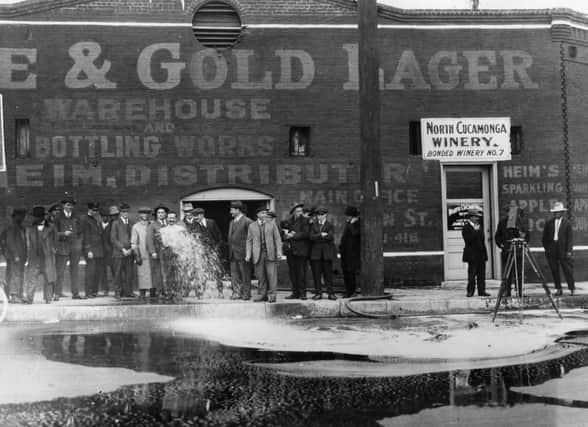Prohibition comes to an end as Utah ratifies repeal (1933)


In order to have the honour of being the decisive state Utah postponed ratification for six hours, and thus caused considerable confusion throughout the United States.
The owners of “speakeasies” were delighted, but the authorities at Washington were greatly annoyed.
Advertisement
Hide AdAdvertisement
Hide AdPresident Roosevelt, in a proclamation announcing the repeal of prohibition, called on all citizens to co-operate with the government in its effort to restore “a greater respect for law” by confining purchases of alcoholic beverages to “licensed dealers or agencies”.
He asked for the wholehearted co-operation of all citizens to ensure that the return to individual freedom should not be accompanied by “the repugnant conditions that obtained prior to the adoption of the 18th amendment, and those which existed since its adoption”.
He added that failure to do so “honestly and courageously” would be a “living reproach to us all”.
When the news became known in New York the “lynching of old man prohibition” in Broadway and there was general rejoicing, with an effigy being cut down from a flag pole and dragged in a coffin through Broadway.
Advertisement
Hide AdAdvertisement
Hide AdThe News Letter reported: The famous 18th Amendment to the Constitution of the United States which introduced prohibition was proposed in a resolution which was carried through Congress on 17th December, 1917, by 282 votes to 128. The ratification of the necessary 36 States was eventually secured, only three States – Connecticut, New Jersey, and Rhode Island – being opposed to the scheme.
“Prohibition was to come into force on 16th January, 1920, but a war measure, passed by President Wilson – which, however, did not come into force until some months after the Armistice – prohibited the sale of drink from 1st July, 1919.
“The cost of 14 years of prohibition to the United States including government enforcement and loss of Federal and State tax revenue, but excluding loss to consumers in excessive liquor charges, has been estimated by a 'wet' group at the immense sum of £4,500,00.
“The toll in lives, including those of criminals, enforcement officers, and victims of bad liquor runs into several thousands.
Advertisement
Hide AdAdvertisement
Hide Ad“Heavy losses were caused to foreign liquor-exporting countries, particularly the United Kingdom, Canada and France. Nowhere in the United States during the dry era was there effective suppression of liquor sales. Alcoholic drinks were obtainable in hotels, ‘speakeasies’, and so-called cordial shops at almost any hour of the day throughout the country.”
Officials' discovery 25,0000-gallon still in New Jersey swamp – A 25,000 gallon still, one of the largest ever captured by the police, was seized by Federal Government officials near Swedesboro, New Jersey, on Wednesday, December 6, 1933, reported the News Letter. The officials, in order to carry out their raid, had to row through a swamp in which the still was located. It contained 1,000 gallons of finished alcohol, and 150,000 gallons of mash, and was equipped with high pressure boilers, and its own electric light plant.